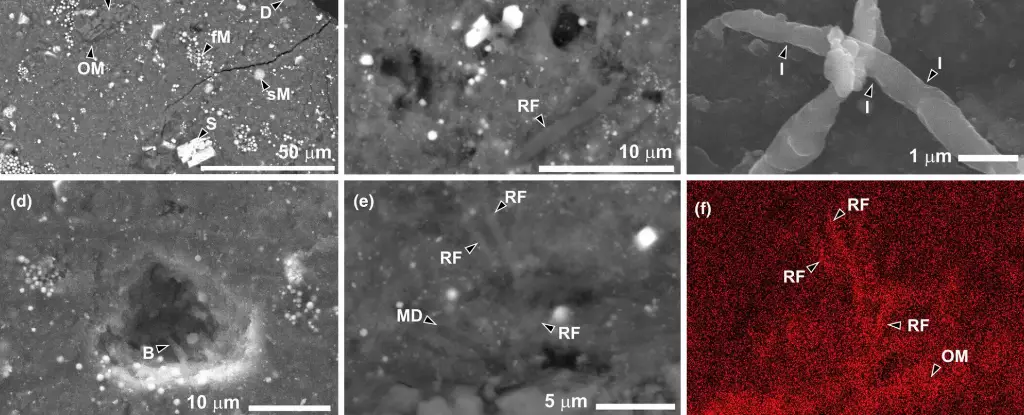The concept of life beyond Earth captivates the imagination and sparks scientific debate. Since the discovery of complex organic molecules in cold molecular clouds and celestial bodies, the exploration of life’s origins has taken unprecedented leaps. Not surprisingly, this venture has led to the hypothesis that the very building blocks of life—namely sugars and amino acids—are scattered throughout the universe, including within asteroids and comets. Yet, beyond merely contemplating these fundamental components, the provocative idea of panspermia emerges—the suggestion that life itself originated elsewhere and was transferred to Earth via cosmic means. Recent studies reigniting interest in this theory have prompted deeper examination of the evidence, especially findings from Japan’s Hayabusa2 mission.
Panspermia, once a popular notion in the 19th and early 20th centuries, gained traction as scientists noted that cellular life appeared on Earth relatively quickly after the planet formed. This observation raised questions about how such complexity could have developed in such a short timeframe—a development that challenges conventional evolutionary narratives. According to the panspermia theory, it is plausible that life developed elsewhere in the cosmos and hitchhiked to Earth on asteroids or comets. While intriguing, these claims necessitate a critical assessment of the mechanisms purported to support panspermia.
Although life can endure extreme conditions, including space, critics argue that the transition from organic compounds to complex biological entities is bespoke and intricately intertwined with the Earth’s environment. For instance, lacking any extraterrestrial life forms for comparison, it remains uncertain how life could sustain itself during the long, perilous journey across the solar system. Questions about the survivability of microorganisms over the vast timescales involved linger and warrant careful scrutiny.
The Hayabusa2 mission, conceived in 2014, propelled the inquiry into panspermia into new territories. The spacecraft’s successful landing on the asteroid Ryugu in 2018 and return of samples to Earth in 2020 presented the scientific community with a potential goldmine of information regarding astrobiology and cosmic chemistry. The meticulous sterilization protocols employed during the mission aimed to ensure that no Earth-based contaminants would skew the results of the research.
Upon returning to Earth, the samples were analyzed under strict conditions to preserve their pristine state. Initial findings revealed structures resembling microbial life, sparking excitement and speculation among researchers and science enthusiasts alike. However, the narrative quickly took a detour into skepticism.
The joy of detecting possible signs of life was tempered by the reality of contamination risks that are omnipresent in biological experiments, especially in such ambitious contexts. Microbial life is characteristically resilient, often thriving in the most inhospitable environments, including nuclear reactors. Even with rigorous sterilization processes in place, the risk of contamination remains acute.
Markers indicating growth patterns in the samples closely mirrored those typically associated with terrestrial microbial life, suggesting potential contamination rather than a groundbreaking discovery of extraterrestrial life. The size distribution and growth rate of organic materials reflected characteristics more aligned with Earth’s extensive colonies of microbes. Such findings imply that, while the moist and nutrient-rich environment of our planet fosters rapid growth, it is improbable that microbial entities from Ryugu would match Earth’s microbial signatures if they had evolved independently in the vastness of space.
This investigation into Ryugu’s samples does not wholly dismiss the panspermia theory, but it does indicate significant caveats. Firstly, the findings prompt an urgent need for stricter sterilization protocols in future space missions, as the potential for accidental contamination could undermine significant results. Could we inadvertently have seeded other celestial bodies with life, such as our Moon or Mars?
Secondly, the organic materials discovered in asteroids like Ryugu present tantalizing possibilities for future colonization and resource utilization in the solar system. If these building blocks of life exist in abundance on other celestial bodies, they could lay the groundwork for establishing life far beyond Earth.
While the narrative of panspermia finds itself entwined with questions of life’s origins and implications for our species, the findings from the Hayabusa2 mission underscore the complexities of this captivating subject. Though our journey toward understanding cosmic life is rife with challenges, it also emboldens our quest to explore the universe. Earth may not be the cradle of life’s beginnings, but it may forge new pathways for life in realms yet to be imagined. The cosmic odyssey is just beginning, and each discovery beckons us to look further beyond our blue planet.


Leave a Reply